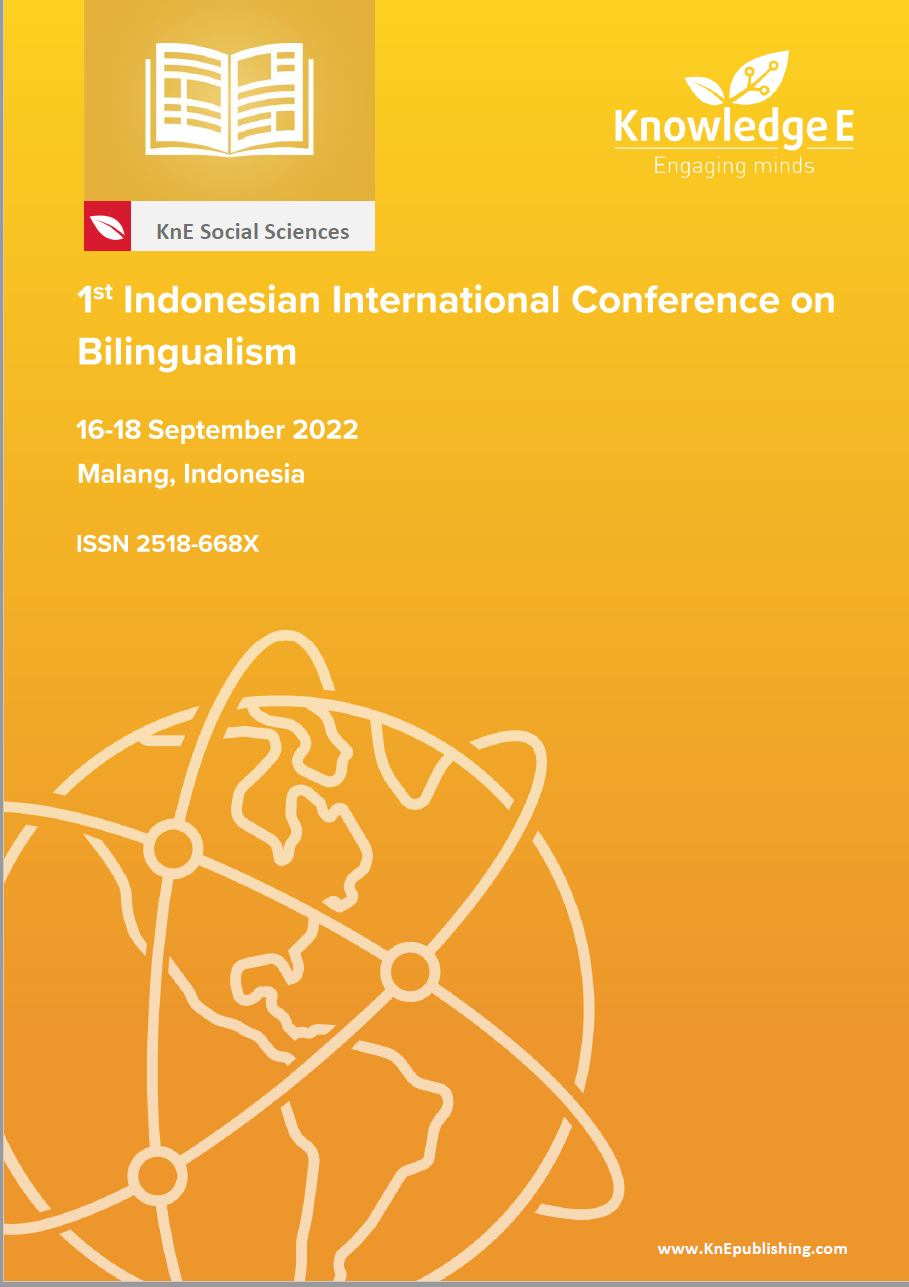Students' Perception of Developing Bilingual Material for The Tourism Industry
DOI:
https://doi.org/10.18502/kss.v8i7.13246Abstract
There exists research about developing books, websites, and other beneficial tools using bilingual language to support learning media or the tourism industry. However, limited studies explore the perceptions of the people who developed bilingual applications, websites, or learning media. This study aimed to accommodate students’ perceptions while developing bilingual applications, websites, or learning media. The participants are D-4 English for Tourism Industry students at the State Polytechnique of Malang. It was conducted qualitatively. The data were gathered from the questionnaire, interview, and documents. The result showed that most of them had positive perceptions of developing bilingual material. However, they had difficulties translating specific words or phrases and faced obstacles in following up the application of bilingual products they had made. By knowing their perceptions on translating the text, developing the bilingual product, and applying the product, hopefully, the future researcher will face fewer obstacles in developing bilingual material, especially for the tourism industry.
Keywords: bilingual approach, students’ perceptions, tourism industry
References
[2] Atkinson D. The mother tongue in the classroom: A neglected resource? ELT J. 1987;41(4):241–7.
[3] Auerbach ER. Reexamining English only in the ESL classroom. TESOL Q. 1993;27(1):9–32.
[4] Božinovic N, Sindik J. Language proficiency for careers in tourism and learning different second foreign languages. Turizam. 2013;17(3):121–30.
[5] Dujmovic M. The use of Croatian in the EFL classroom. Metodicki obzori. 2007;2(1), 91–101.
[6] Harnad S. Categorical perception: The groundwork of cognition. Cambridge: Cambridge University Press; 1987.
[7] Kelilo JA. (2012). Exploring the use of first language in “English focus” EFL classroom: Focus on Jimma lecturers’ college (Postgraduate thesis, Jimma University, Ethiopia). Retrieved from https://asian-efl-journal.com/wpcontent/ uploads/mgm/downloads/69453700.pdf
[8] Kim E, Kweon S, Kim J. Korean engineering students’ perceptions of Englishmedium instruction (EMI) and L1 use in EMI classes. J Multilingual Multicult Dev. 2016;38(2):130–45.
[9] Könings K. Student perspectives on education: implications for an instructional redesign (Unpublished doctoral dissertation, University of the Netherlands). Available from https://www.ou.nl/documents/40554/111691/ proefschrift_Karen_Konings_2007.pdf/6323a9d0-9d87-4e7e-85f1-3a001146af58
[10] Kumar N, Kanchan T, Unnikrishnan B, Rekha T, Mithra P, Kulkarni V, et al. Perceptions and practices of self-medication among medical students in coastal South India. PLoS One. 2013 Aug;8(8):e72247.
[11] Latsanyphone S, Bouangeune S. Using L1 in teaching vocabulary to low English proficiency level students: A case study at the National University of Laos. Engl Lang Teach. 2009;2(3):186–93.
[12] Marian V, Shook A. The cognitive benefits of being bilingual. Cerebrum. 2012 Sep;2012(13):13.
[13] Napu N. Does commissioning process matter? Understanding translation quality with a case of tourism promotional texts. Journal of Language and Linguistic Studies. 2016;14(4):352–63.
[14] Ni Luh Putu D, Adiwijaya PA, Luh Made Dwi W. Teachers’ needs analysis in developing English for tourism learning materials. Language and Education Journal Undiksha. 2022;5(1):70–6.
[15] Rohmahwati P. Project-based learning to raise students’ speaking ability: its effect and implementation (A mix method research in speaking II subject at STAIN Ponorogo). Kodifikasia. 2016;9(1):199–221.
[16] Schweers C. Using L1 in the L2 classroom. English Teaching Forum. 1999;37(2):6–13.
[17] Topler JP. Turning travelogue readers into tourists: representations of tourism destinations through linguistic features. Cuad Tur. 2018;42(42):447–64.

